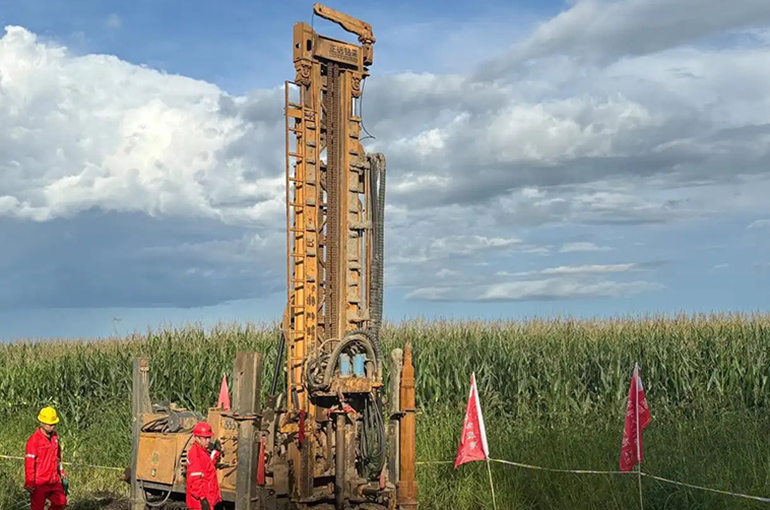 Chinese Coal City Breaks Ground on First Airport to Ease Transport Bottlenecks, Transform Its Economy
Chinese Coal City Breaks Ground on First Airport to Ease Transport Bottlenecks, Transform Its Economy(Yicai) Aug. 29 -- Hegang, a coal-mining hub in China’s northeastern Heilongjiang province, has begun building its first airport with the aim of developing the city’s limited transport links and supporting its economic transformation.
Hegang Luobei Airport kicked off construction in the northeastern part of the city on Aug. 27 and is expected to be completed next year and commence flight and operational trials in 2027, Yicai learned from the local government. The project’s total investment is nearly CNY1.1 billion (USD149.5 million).
The main construction includes a 2,500-meter-long, 45-meter-wide runway, an apron with six aircraft parking spots, and a 5,008-square-meter terminal building. Once completed, the airport is expected to record an annual throughput of 450,000 passengers and 1,600 tons of cargo and mail, with a total of 5,000 aircraft movements per year.
Building the airport is not only a key move to address transportation shortcomings but also a strategic choice for the city’s transformation and development, local government officials told Yicai.
The airport will accommodate Boeing 737 and Airbus A320 jets, as well as the China-made C919 aircraft, with direct flight ranges of 2,000 km. Initial plans include opening routes to cities such as Harbin, Beijing, Shanghai, and Qingdao. Later, routes to Xi’an, Chengdu, and Guangzhou will likely be added.
Hegang is not connected to China’s 48,000-kilometer high-speed rail network, and road transport is heavily affected by extremely cold winters. The nearest airport is more than 70 km away in Jiamusi, with no direct bus services between the two cities, creating a bottleneck that has restricted Hegang’s development.
Hegang, which shares a 235-km border with Russia, was once prosperous because of coal but later faced transformation due to resource depletion, becoming known in China for its extremely low housing prices. In recent years, it has shifted its focus to graphite as a strategic emerging industry, modern agriculture, and cultural tourism.
Hegang is rich in graphite resources, with proven reserves ranking first in China at nearly 2.3 billion tons. Leveraging graphite, Hegang is working to build a new industrial cluster, forming a complete supply chain, from mining to deep processing of anode materials for new energy applications.
The new airport will be only 70 km away from Asia’s largest single graphite mine.
From the perspective of the graphite industry, the efficiency of air transport can greatly reduce transportation time and improve logistics efficiency, said Xuan Xianda, deputy director of the Hegang Municipal Bureau of Industry and Information Technology.
The airport will also promote the establishment of an airport economic zone, attracting companies in industries such as logistics, warehousing, and high-end manufacturing, and fostering diversified industrial growth, Xuan added.
“The airport will bring tremendous business opportunities to the local tourism industry,” Wang Bing, manager of Heilongjiang Jiejiang Travel Agency, told Yicai. Most of Hegang’s tourists come from within the province and surrounding regions, as visitors from East and South China and the Beijing-Tianjin-Hebei area often cancel their plans due to inconvenient and time-consuming travel, Wang noted.
Editor: Futura Costaglione